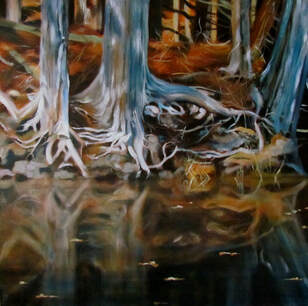 "The Ancients" 1 glaze oil 24 x 24
"The Ancients" 1 glaze oil 24 x 24 Enough wallowing. This week I’ve been reflecting on the cedar, whose outlook, I think, is a feel-better narrative. No threats I know of! The modest white cedars of Ontario may not equal the towering west coast red cedars of the Pacific rain forest but they themselves are marvels. I can look out our windows and see towering sixty-footers racing each other to grab sunlight. Not far away — on the Escarpment cliffs — one can find miniature white cedars which predate Columbus even if they had to self-bonsai to do it. All shapes, all sizes, all conditions, cedars take foothold everywhere, though they seem happiest living near water. Then, who isn’t?
It’s not easy to ignore such a versatile and tough species but I managed for decades. In fact as a prairie kid I knew it not as a living thing but as a word for boring, even ubiquitous, house stuff. While cottagers or owners of “rec rooms” might have had cedar-paneling, everyone had a cedar-chest to store out-of-season woollens. If someone had asked me what cedar smelled like, I probably would would have replied, “Mothballs, of course.”
Not even close and definitely no cigar. Cedar not only has insecticidal properties but it smells divine. The heat and humidity have risen today and experience tells me that country paths are anointed with their sweet aroma. Turns out that cedar IS the smell of summer camp.
That doesn’t mean that cedar plays nice with other tree species. A mature cedar forest appears quite barren. While it’s true that other trees, like walnuts for example, also repel most other plants by producing a poison from their roots, a few species do survive in the understory; finding a list of walnut-tolerant plants was a godsend for me because it told me what would survive under our old walnuts. Unfortunately I’m not aware of such a list of cedar-tolerant plants. So if you don’t like the cedar forest’s beautifully warm rust-coloured floor comprised from its spent needles, you are out of luck because these trees outcompete everybody else.
Yet -- when the low rays of morning or evening sunlight penetrate the forest, all is forgiven. The play of blue shadow against Indian red duff was enchanting enough to inspire at least one painting.
One last kudo for cedar. Bees are in the sweets business and perhaps their aroma is why our girls of summer chose the old cedar for their hive. To seal the deal, the opening is just right — wide enough to allow multiple flight paths yet narrow enough to stave off pilfering. Our small Eden hums and at least here and now everything is right with the world.



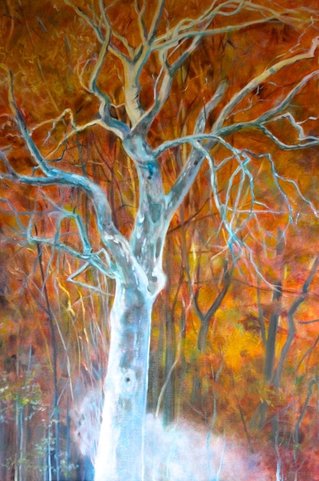

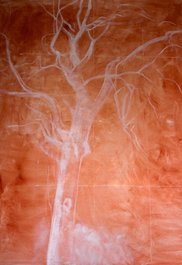
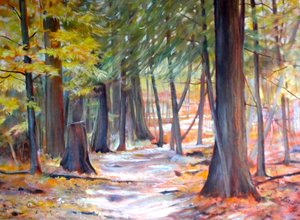
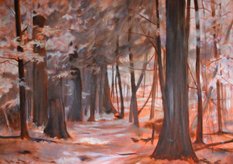


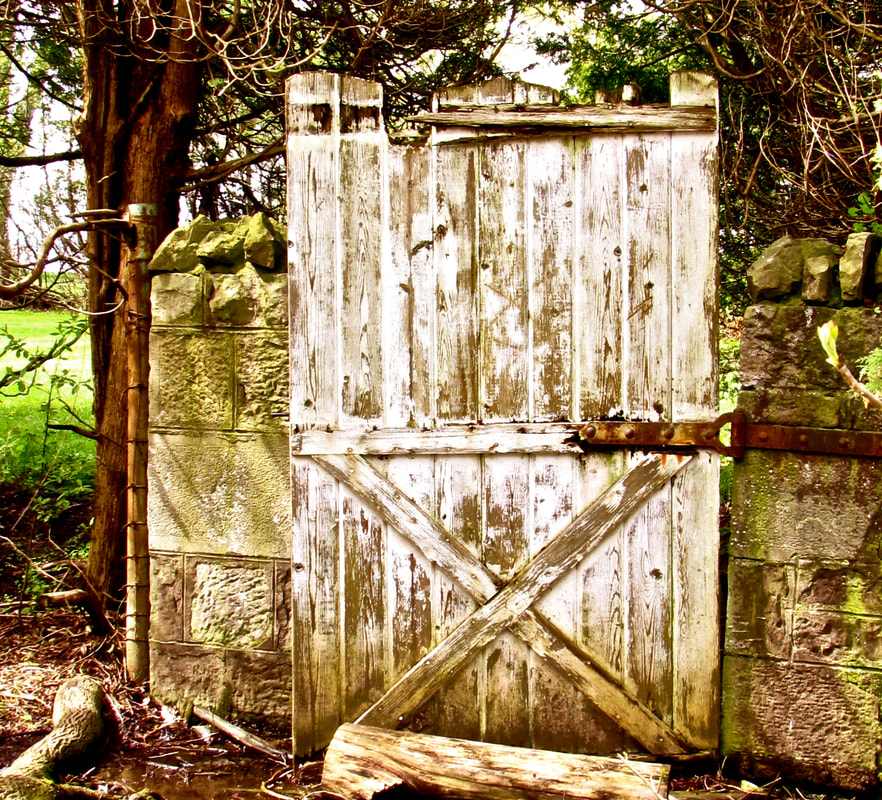
 RSS Feed
RSS Feed
